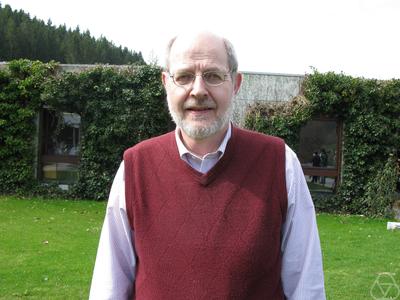 Ronald George Douglas, born 10th December 1938 in
Osgood, Indiana, is an American mathematician, best known for his work
on operator algebras. Ronald George Douglas, born 10th December 1938 in
Osgood, Indiana, is an American mathematician, best known for his work
on operator algebras.
Douglas was born in Osgood, Indiana. He was
an undergraduate at the Illinois Institute of Technology, and received
his Ph.D. in 1962 from Louisiana State University as a student of
Pasquale Porcelli. He was at the University of Michigan until 1969, when
he moved to the State University of New York at Stony Brook. Beginning
in 1986 he moved into university administration, eventually becoming
Vice Provost at Stony Brook in 1990, and Provost at Texas A&M University
from 1996 until 2002. Currently he is a Distinguished Professor in the
Department of Mathematics at Texas A&M. He has three children, including
Michael R. Douglas, a noted string theorist.
He is the author of
the book Banach Algebra Techniques in Operator Theory in the series
Graduate Texts in Mathematics.
Among his best-known contributions
to science is a 1977 paper with Lawrence G. Brown (de) and Peter A.
Fillmore, which introduced techniques from algebraic topology into the
theory of operator algebras. This work was an important precursor to
noncommutative geometry as later developed by Alain Connes among others.
In operator theory, an area of mathematics, Douglas' lemma relates
factorization, range inclusion, and majorization of Hilbert space
operators. It is generally attributed to Ronald G. Douglas, although
Douglas acknowledges that aspects of the result may already have been
known.
In 2012 he became a fellow of the American Mathematical Society.
|


